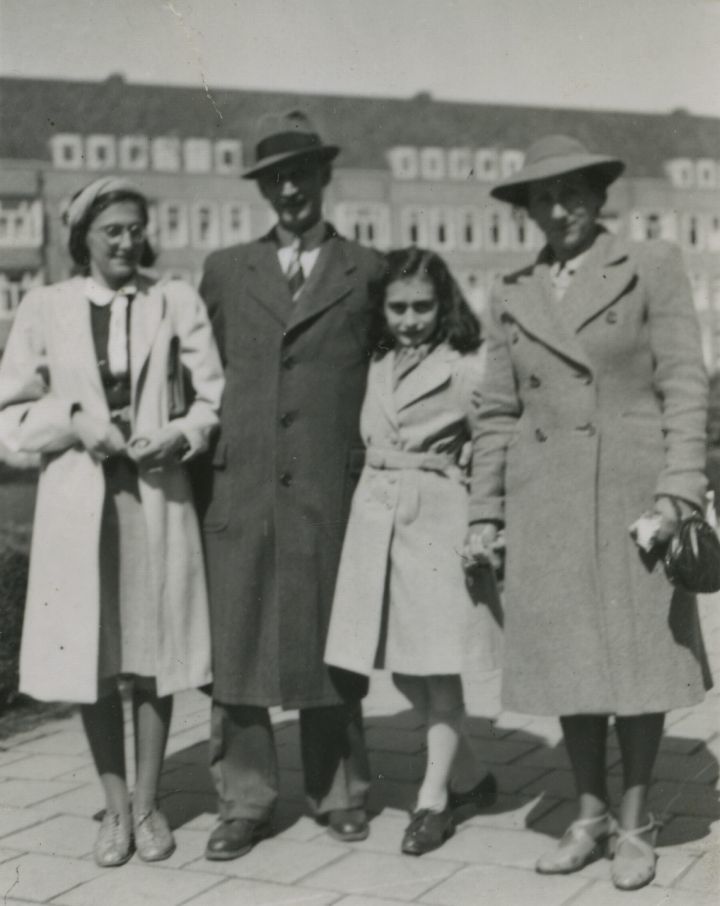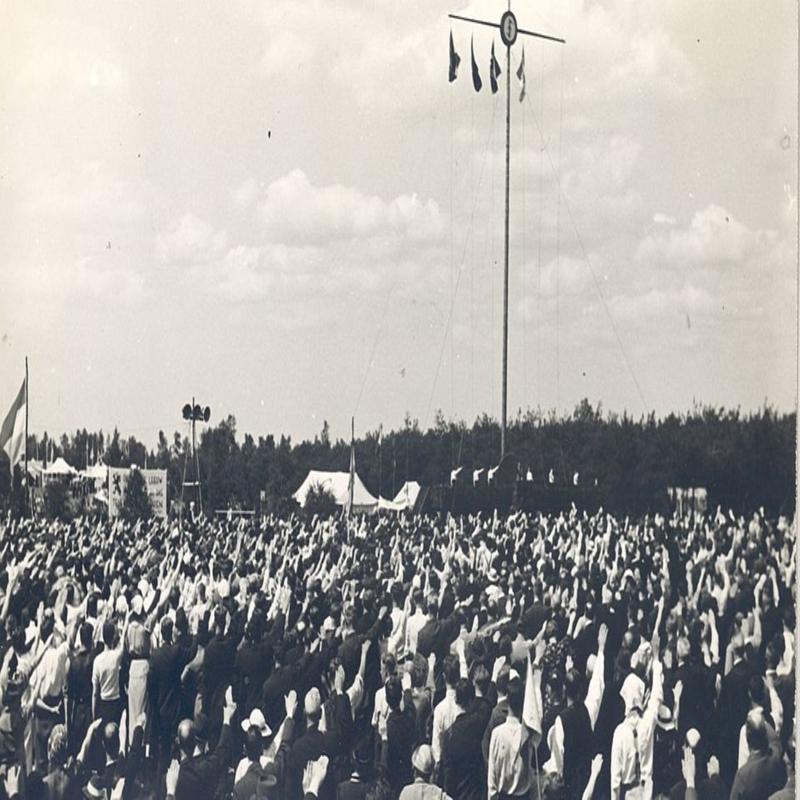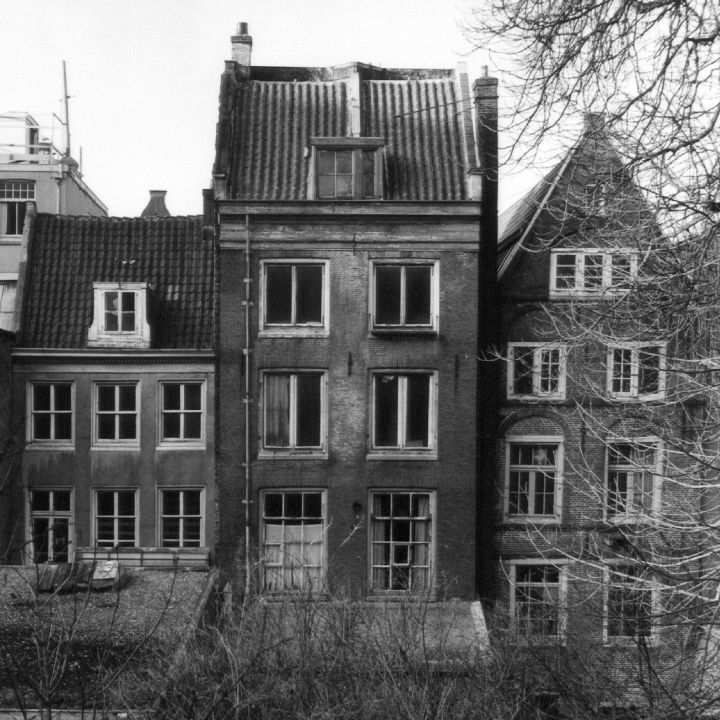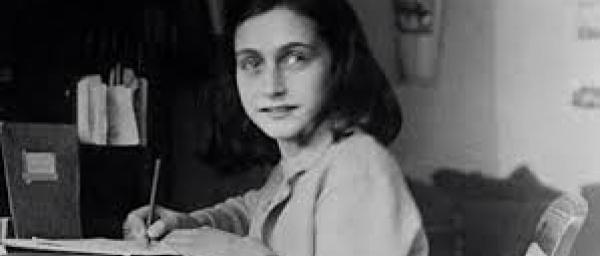Diary of Anne Frank
Posted on 12th June 2021
On 10 May 1940, without any prior declaration of war Germany invaded the Netherlands.
Much to their surprise the Germans suffered a series of early reverses when attempts to take key positions were repulsed but it was a temporary setback only as the Dutch Army though brave and resourceful was poorly led with a High Command that had no coordinated plan of defence.
A quick victory in the Low Countries was vital to the Germans planned Blitzkrieg on France but they feared becoming bogged down among the canals and easily flooded landscape of low-lying Holland. In response, on 14 May the Luftwaffe launched a massive air-raid on the besieged port of Rotterdam designed to intimidate the Dutch Government and strike terror into the heart of the civilian population.
With two-thirds of their small air force already destroyed the Dutch had little defence and in a very short time the docks had been devastated, the city centre razed to the ground, and some 900 people killed. Fearing the similar destruction of other cities and with no realistic prospect of help from either French or British forces the Dutch surrendered the same day.
Despite their swift victory the Germans had been irritated by the resistance they had faced from a people expected to be their natural allies. Nevertheless, the new Reich Commissar for the Netherlands Artur Seyss-Inquart adopted a conciliatory tone in his address to Dutch Civil Servants and Government Officials expressing his regret at the destruction and loss of life, but he also went on to say that he expected their willing and full cooperation in the implementation of Nazi policy especially in the area of race and resettlement.

Otto Frank had fled Germany along with his family not long after Hitler had come to power in 1933 settling in Amsterdam where he found work with Opteka a company that produced fruit extracts and in which he later bought shares before in 1938 establishing his own company, Pentacon, selling mixed herbs and spices.
His children were also doing well in school, particularly Anne who extrovert and impulsive was so unlike her more sober and studious sister Margot, and she had already expressed an interest in becoming a writer or perhaps even an actress - but now the Nazi’s had returned.
Seyss-Inquart was eager to implement anti-Semitic policies as soon as possible but the requirement to prepare the Netherlands for incorporation into the German Reich forced him to move with greater caution than he had for example in Austria in 1938, but he still expected compliance from his fellow Aryans and in this regard, he was not to be entirely disappointed.
The Netherlands already had its own Nazi Party the N.S.B, and in Anton Mussert its own puppet Fuhrer but it had little tradition of political anti-Semitism. Indeed, Mussert had often boasted of the N.S.B’s many Jewish members.

This is not to say that anti-Semitism was unknown in Holland but it was never of the same virulence that had poisoned so many other countries during the inter-war years. Even so, the Netherlands was to remain a deeply conflicted society throughout the Occupation.
There was a great deal of collaboration with but little enthusiasm for the Nazi’s and no sooner had membership of the N.S.B Increased than it declined again; and though 50,000 Dutchmen were to volunteer to serve in the Waffen SS, some 30,000 Jews were also to be hidden from the Gestapo by their friends and neighbours.
Soon after the conquest Dutch citizens were ordered to attend Civic Offices to complete forms and have passes issued according to ethnic, religious, and racial background. They were also expected to indicate whether they were practising Jews, born Jews, or were of Jewish descent.
The Dutch never afraid to voice their disapproval did so but little was done and despite a few Civil Servants dragging their heels few, if any, resigned, and the programme was completed efficiently and on time.
However, when in February 1941 a small number of Jews were transported to Concentration Camps in the East it provoked a wave of strikes and street protests in Amsterdam and other major cities which saw troops used to restore order and much to its credit the Netherlands was to be the only country under German Occupation where people took to the streets to protest the treatment of their Jewish neighbours. It did nothing to change Nazi policy, but it may have slowed its implementation down a little and it was not until two years after the invasion in March 1942, that Jews were at last forced to wear yellow felt badges of identification.
In the meantime, Otto Frank had been forced to hand over his business to trusted non-Jewish friends who in turn sustained him with an income. He also unsuccessfully applied for visas for himself and his family to emigrate to either the United States or Cuba.
Anne and Margot had also been forced to leave their respective schools and attend an Institute for Jewish children only. Indeed, the pressure on the Jewish population increased as the restrictions mounted.
Unable to own businesses, forced to resign from the Civil Service and all civic posts and not allowed to be employed in non-Jewish households’ employment became increasingly difficult as also did a social life as they were not permitted to attend the theatre or the cinema, or even use parks and public transport.
On 12 June 1942, her thirteenth birthday Anne received a book, an autograph book not a diary but it had blank pages and as far as she was concerned blank pages needed filling at first with trivia but she soon began to describe the conditions Jews were being forced to live under and as she warmed to her task the words flowed and both her thought and her feelings began to be expressed with an often painful honesty.
By the summer of 1942, the round-up of Jews for detention in transit camps prior to deportation to the East had begun in earnest and in July Anne’s sister Margot received an order to attend a Labour Camp. Otto had no intention of allowing her to do so and having already made plans to go into hiding he now brought the decision forward.
On 6 July 1942, the family walked the mile and a half from their home at Merwedeplein to the Opteka Offices on the Prisengracht. They could not afford to be seen carrying luggage so wore extra layers of clothing and carried what they could on their person. It was nerve wracking for were they to be stopped it could result in all of them being sent to a transit camp and it was not uncommon for Jews if recognised to be beaten up and robbed on the streets.

Anne’s father had earlier arranged for three storeys of the Opteka Offices to be adapted into living quarters and what was too become known as the Achterhuis, or Secret Annexe, had a bathroom, a lavatory and four small rooms with the entrance to it hidden by a bookcase.
Having a place to hide was one thing but they would be reliant upon a small number of trusted friends and work colleagues for their survival; Johannes Kleimann, Bep Voskuijl, Hendrik Voskuijl, Victor Kugler, and Jan and Miep Gies would be their helpers and provide them with the things they required, though as time went on this would become increasingly difficult particularly with regards to food.
They were aware that to be caught sheltering Jews ran the risk of the death penalty but even so they would do their best to protect them. But it was also the case that the more people who knew of their secret the greater the risk of it being revealed, for it was not just the Germans that the Frank’s had to fear but also their fellow countrymen.
There were always willing collaborators and those who sought to exploit the situation for their own advantage, groups such as the Henneicke Column who bullied and intimidated people into revealing the whereabouts of Jews in hiding and whose property they then stole before selling each captured Jew to the Germans for around 7 Guilder, or the equivalent of £30.
A week after they had moved into the Achterhuis the Franks were joined by the Van Pels family and later by Fritz Pfeffer, a friend of Otto’s.
Being confined to the Secret Annexe, a virtual prison of their own making, was difficult for the sociable and gregarious Anne but she kept herself busy updating her diary most days and even taking a correspondence course in short hand under one of their helpers names.
In the pages of her diary, she detailed the growing tensions within the Acherhuis and her strained relationship with her mother but also how she had been drawn closer to her sister someone with whom she had previously believed she had little in common.
But more than the written frustrations of close confinement and thwarted ambition it is the testimony of nascent womanhood, of a young girl growing into adolescence, of her hopes, her dreams, her ambitions, her fears, and her confusion at the physical changes she was undergoing. Being able to write was her release:
“When I write I can shake off all my cares. My sorrow disappears, my spirits are revived! But, and that’s a big question, will I ever be able to write something great, will I ever become a journalist or a writer?”
The answer to that question would never be revealed to her, but she would not, as she so often fretted about, be forgotten. On 1 August she wrote: “I get cross, then sad, and then finally end up turning my heart inside out, the bad part on the outside, the good part on the inside, and keep trying to find a way to become what I’d like to be and what I could be if . . . if only there were no other people in the world.”
It would be her last diary entry; she would write no more. On the morning of 4 August 1944, the Acterhuis was raided by the Gestapo.
They had been betrayed but by who exactly remains a mystery, though some believe it to have been Tonny Ahlers a vicious anti-Semite and willing collaborator known to the Franks who was later to serve time in prison for his wartime activities.
Much of the evidence for this however comes from his son Anton who would have been a young boy at the time and his claim that his father informed on the Frank’s for money does not explain how such a notorious anti-Semite would have become aware of their hiding place.
Under arrest the occupants of the Achterhuis were stripped of their belongings, interrogated, and three days later transported to the Westerbork Transit Camp where they were put to hard labour. On 3 September, they were transferred to Auschwitz Concentration Camp where Otto was separated from his family. He would never see them alive again.
Anne was just of an age old enough not to be sent immediately to the Gas Chamber, but she would instead have to endure the torments of the Labour Camp and along with her mother and Margot she was stripped, disinfected, had her head shaved and put to work.
Those inmates of the Camp who remembered Anne recalled her being surprisingly cheerful and optimistic which was to prove a great asset to her mother and sister though they also remembered how she would sometimes reveal her true emotions in floods of tears.
On 28 October, Anne and Margot were taken from their mother who had become so weak from starving herself to provide for them that she could not be moved and transferred to Belsen-Bergen. Edith Frank was to die soon after.
In March 1945, a typhus epidemic swept through the Camp taking the lives of thousands of prisoners one of whom was Anne, just days after Margot had died from the effects of a fall.
On 15 April, Bergen-Belsen was liberated by British troops.
At the time of her death Anne Frank was just one of the many millions who had fallen victim to the racial and religious genocide of the Nazi’s who may have remained unknown to the world.
A few days after the Frank’s had been arrested, Miep Gies had returned to the Achterhuis to retrieve what she could of their possessions. There was little to be found but among the debris of their previous existence she recovered Anne’s diary and a few other papers that had been left strewn on the floor. She determined to return it if possible, to Anne at the war’s end but following the confirmation of her death she presented the diary to Otto who had remarkably survived his confinement, one of only 5,000 of the 154,000 Dutch Jews sent to the Death Camps to do so.
In recognition of Anne’s often repeated desire to be a writer and as a testament to the oppression of the Jewish people under occupation he prepared the diary for publication even though Anne had written that it was a private journal and not for the eyes of others.
She had wanted to have her experience of life in hiding published but not her most intimate thoughts and had already written various draft versions. Otto now did likewise carefully editing the manuscript removing all criticism of other family members and in particular her often graphic descriptions of her physical development and sexual awakening.
Weariness of the war and all its horrors saw publication of the book in Anne’s native Netherlands delayed until the summer of 1947, but it has since been published around the world with some of the later editions containing many of the previously deleted extracts.
There are those however who still insist that the Diary of Anne Frank could not have been written by such a young girl and contest its authenticity, but all evidence suggests otherwise.
Anne Frank was denied the opportunity to become a great writer but what she did produce was in many respects far more significant than fanciful flights of the imagination or the clever manipulation of words. It was the honest account of a spirit too young to have been corrupted by bitterness and hate and a testament of hope over despair in the eternal fight of good against evil.
Share this post:





